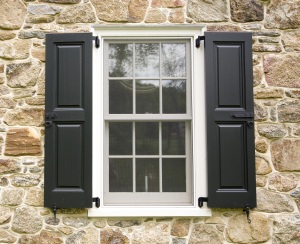Rotting shutters are not unusual even when they’re made of rot-resistant woods. “Incredibly, cedar, teak, mahogany and cypress will rot if they can’t dry out,” says Chris Peeples, owner of Vixen Hill Cedar Shutters. “Moisture trapped in wood grain, especially in warmer climates, allows bacteria to breed voraciously. The inherent natural toxins that prevent rot in these woods are simply overwhelmed! Rotting can also be attributable to modern coatings,” explains Mr. Peeples. “Today’s paints include impervious resins that act like plastic coatings,” he continued. “The myth is that these coatings prevent water penetration, thereby eliminating rot. This is not true because expansion and contraction of the shutter surface creates hair-line cracks that allow water penetration. The water becomes trapped by the paint. Since the wood can’t breathe and dry out, bacteria breeds and the wood rots.”
In the old days paints were simply oxide pigments mixed with linseed oil. They weren’t shiny like plastic shutters. The linseed oil in the coating shed water yet allowed the wood to breath. That’s why the shutters on old houses lasted one hundred years or more. It’s the advent of plastics and urethanes during the 60’s that made people think that shutters should have a glossy shiny finish. But, if you want to be historically accurate and have your shutters last for decades, you can still buy solid oil based solid stains. If you use the proper coating, authentic wood shutters will outperform plastic and metal shutters.


